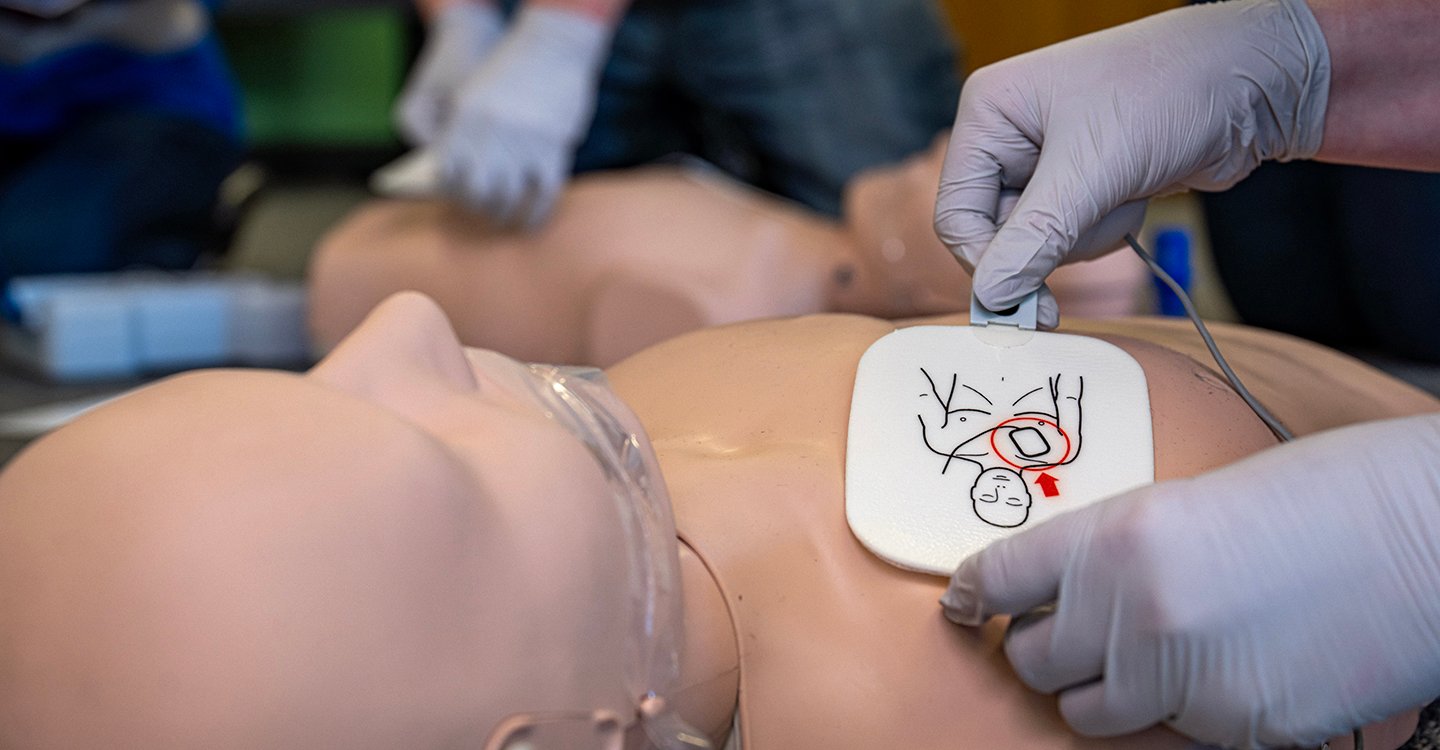Bystanders can give sudden cardiac arrest (SCA) victims the best chance of survival by calling 911 and providing early CPR and AED use.
Although CPR can help supply oxygen to the brain and other vital organs, it usually can’t restore a normal heart rhythm on its own – making early AED use a critical step in surviving SCA.
In fact, the chance of survival decreases 7-10% every minute that passes without an AED shock. And it’s most effective when given in the first three minutes of cardiac arrest.
Fortunately, businesses and communities are becoming more aware of the importance of having access to an AED during an emergency. They can now be found in large public spaces, like airports, stadiums and schools – which means more lives can be saved.
Even though AEDs are a lifesaving device, they’re designed to be simple and user-friendly.
Here’s a breakdown of how to apply AED pads during a SCA emergency.
AED Pad Placement 101
The AED will provide visual and auditory cues to help direct bystanders. This means that anyone can use an AED, even without formal training.
The basic steps of using an AED are as follows:
-
Turn on the AED.
-
Apply AED pads.
-
Follow the AED prompts.
-
Clear the victim and shock.
-
Resume compressions and continue to follow prompts.
But how do you apply the pads? This will depend on the age and size of the victim.
For adults (includes children age 8 or older or more than 55 pounds):
-
Peel the pads off the backing.
-
Place one pad on the right side of the chest, just below the collarbone.
-
Place the other pad on the lower left side of the chest.
-
Connect the pads to the AED. Some pads come pre-connected to the AED.
Always apply the pads to the chest according to the pictures on the pads. And always apply them to bare skin.
Expose the chest by opening or cutting the shirt (and bra if applicable) before applying the pads.
If the chest is wet, wipe it dry. If the chest is hairy, use a razor or an extra set of AED pads to remove hair from the pad placement area.
AED Pad Placement for Children and Infants
Children require a lower level of energy to defibrillate the heart. Some AEDs may include pediatric pads or equipment that are designed for children and infants.
In terms of using an AED, a child is younger than age 8 or weighs less than 55 pounds.
Follow these AED use guides for children and infants:
-
Use child pads and equipment if available. If not available, use adult pads.
-
Do not cut or fold AED pads. Do not let AED pads overlap.
-
Use a front-back pad placement for small children and infants.
If you don't know the child's weight or age, look for signs of puberty (e.g. facial hair, breast development, etc.) If a child is showing signs of puberty, use adult pads. In this case, pediatric pads wouldn't deliver enough energy to defibrillate the child's heart.
AEDs Save Lives
Here’s a brief AED pad placement summary:
|
Action |
Adult |
Child |
Infant |
|
AED |
Use as soon as available |
||
|
AED Age |
Age 8 & older or > 55 lbs |
1-8 years old |
< 1 year old |
|
AED Pads |
Adult pads |
Child pads; if none, adult pads |
|
Contact your local Training Center to learn about AED use and get certified in CPR, AED and First Aid.
Need an AED for your business? Contact your HSI representative or find an AED in our online store.
For ASHI or MEDIC First Aid customers, shop online: ASHI | MEDIC First Aid
For EMS Safety or new customers click here
And be sure to check out How to Position Your Hands for CPR to learn correct CPR hand placement.







.png)











Comments